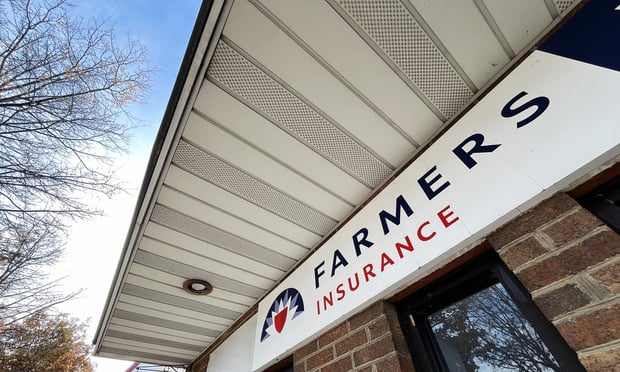Commercial property carriers process thousands of claims involving various electronic inventories every year. When dealing with computer, medical, telecommunication, and manufacturing equipment losses, two questions arise: Are major commercial carriers maximizing their opportunities to lower the loss ratio limit? Should salvage recovery efforts be the last thought in settling electronic equipment losses?
The answer to both questions is, "No." Upon settling claims, adjusters often overlook the most potentially redeeming item: loss inventory salvage recovery value. Over the years, insurance carriers have been groomed by general salvors to believe that 10 percent loss inventory recovery is an industry standard.
Adjusters often let expensive loss inventories rot in storage facilities until claim settlements have been etched in stone. Allowing high technology loss inventories to remain in warehouses for indefinite periods of time exposes insurance carriers to unnecessary and expensive monthly storage fees, potential theft, and lower recovery values because the inventory is now a generation older or has deteriorated due to untreated water or smoke contamination.
Most commercial property claims involving electronics are processed in a traditional, systematic manner with recovery efforts being an afterthought. Once an adjuster establishes that a claim payment or settlement is imminent, disposition of the loss inventory should be explored. By exploring salvage or recovery options before closing files, carriers can better predict required reserves, save costly storage fees, and maximize recovery values by reselling loss inventory sooner rather than later.
What if more than one carrier is involved in the claim and subrogation is probable? Quite commonly, multiple carriers or parties can be involved in the same claim without any clear identification of who will bear responsibility for the claim payment. When these situations arise and the loss inventory is available for disposition, every effort should be made to get the involved parties to agree that it is mutually beneficial that the loss inventory salvage proceedings occur immediately, regardless whether liability has been determined. I have seen seven-figure recovery values dwindle to five figures because those involved waited to address recovery options until after the claim settlement.
Choosing the right vendor and marketing format are critical to achieving maximum recovery values. General salvors are the most common vendors called upon to process high-value, high-technology loss inventories. Unfortunately, general salvors often deal with everything from consumer goods to heavy equipment vehicles, and may lack the knowledge and necessary expertise in handling highly technical inventories. Multi-discipline (engineering, salvage, and restoration) firms might be a better choice, as they typically are more astute in managing technical losses.
The best option, however, is to find a salvage firm that specializes in the evaluation and liquidation of compromised electronics. Adjusters often will research and retain expert engineering firms to assist in mitigating an electronic equipment loss inventories but rarely will seek the same expertise when disposing of the equipment.
Online Auction vs. Negotiated Sale
The format in which compromised electronics are re-marketed is the single most determining factor in yielding a maximum recovery. Many general salvors have gravitated to the online auction format, which involves posting on a web site generic photos of a loss inventory in unknown operational condition. Although general salvors will tout phenomenal results with thousands of offers received, does this really reap maximum value for compromised, high-technology electronics?
The first question prompts a second. Imagine yourself as a buyer, bidding on an inventory of damaged electronics that has been deemed a total loss by an insurance company. Are you going to submit an aggressive offer or submit a low offer to minimize your risk?
Attempting to liquidate compromised electronics in a broadcast or auction format often creates the illusion that more equipment is available in the marketplace than really is. Conversely, quietly introducing a compromised loss inventory of known operational condition to a select group of buyers of that type of commodity will create the urgency to act aggressively on a limited supply and keep equipment brokers out of the sale equation, ultimately yielding higher recovery values.
Every effort should be made to maintain loss inventories in secured, environment-controlled facilities with limited access. I have experienced unsecured loss inventories that were stripped of all valuable components and, in some instances, that completely disappeared. To insure maximum salvage or recovery returns, compromised high-value, high-technology inventories should be subject to formal equipment evaluations, consisting of a stage-and-testing process, to determine an exact inventory of marketable components.
The stage-and-testing process should be coordinated with the original manufacturer or subcontracted to an unbiased, authorized testing service. In some circumstances, the insured will offer to stage and test the loss inventory. Although this is somewhat of a common occurrence, it is strongly recommended that an insured not perform stage and testing of a loss inventory, due to potential complications and integrity issues.
Depending on the outcome of the stage-and-testing process, I often recommend performing nominal repairs and restoration to enhance the value of a loss inventory. Extensive cost analysis of a proposed repair or restoration needs to be performed prior to recommendation to a carrier or client. I often have encountered instances in which a $2,000 replacement component is the difference between a $500,000 device's working and not working. Again, depending on the nature of the loss and the extent of damage, I frequently will recommend that an inventory undergo at least superficial decontamination or restoration in an effort to make it more presentable.
Although the stage-and-testing process does require time and expense, the long-term benefits always outweigh the negatives. Being able to present a loss inventory to prospective buyers, complete with a formal equipment audit and operational status report, will streamline the liquidation process, yield maximum recovery values, and provide buyers with a feeling of inventory integrity. Once an inventory of presentable components has been established, the salvor can market the inventory accurately to potential buyers. A little extra effort prior to introducing the inventory to the used marketplace will realize big rewards upon conclusion of the sale.
Should insurance carriers negotiate their own salvage sales? Many property adjusters are uncomfortable negotiating salvage values, purely due to lack of product knowledge and market value. If the adjuster and carrier are comfortable with their abilities to establish salvage values, I think that it is fine for them to negotiate their own salvage sales on loss inventories up to $20,000 claimed value. Because of the complex variables that exist when dealing with technical losses greater than $20,000, claim-processing personnel should research and retain qualified evaluation and salvage services.
Time is not kind to loss inventories when resolving electronic equipment losses. Seeking the assistance of a qualified electronic expert who can properly evaluate and select an appropriate marketing format in a timely fashion will greatly enhance recovery values, lowering loss ratio limits and cash reserves.
Locating Qualified Expert Salvage Service Vendors
The following web sites and publications have listings and link to expert insurance service vendors:
oA.M. Best Company
oClaims
oClaims-portal.com
oThe Loss Executive Association
oProperty Loss Research Bureau (PLRB-Claims Pages)
John Brezinski is president of Electronic Salvage Resources. Contact him at www.esrincorporated.com.
Want to continue reading?
Become a Free PropertyCasualty360 Digital Reader
Your access to unlimited PropertyCasualty360 content isn’t changing.
Once you are an ALM digital member, you’ll receive:
- Breaking insurance news and analysis, on-site and via our newsletters and custom alerts
- Weekly Insurance Speak podcast featuring exclusive interviews with industry leaders
- Educational webcasts, white papers, and ebooks from industry thought leaders
- Critical converage of the employee benefits and financial advisory markets on our other ALM sites, BenefitsPRO and ThinkAdvisor
Already have an account? Sign In Now
© 2024 ALM Global, LLC, All Rights Reserved. Request academic re-use from www.copyright.com. All other uses, submit a request to [email protected]. For more information visit Asset & Logo Licensing.








